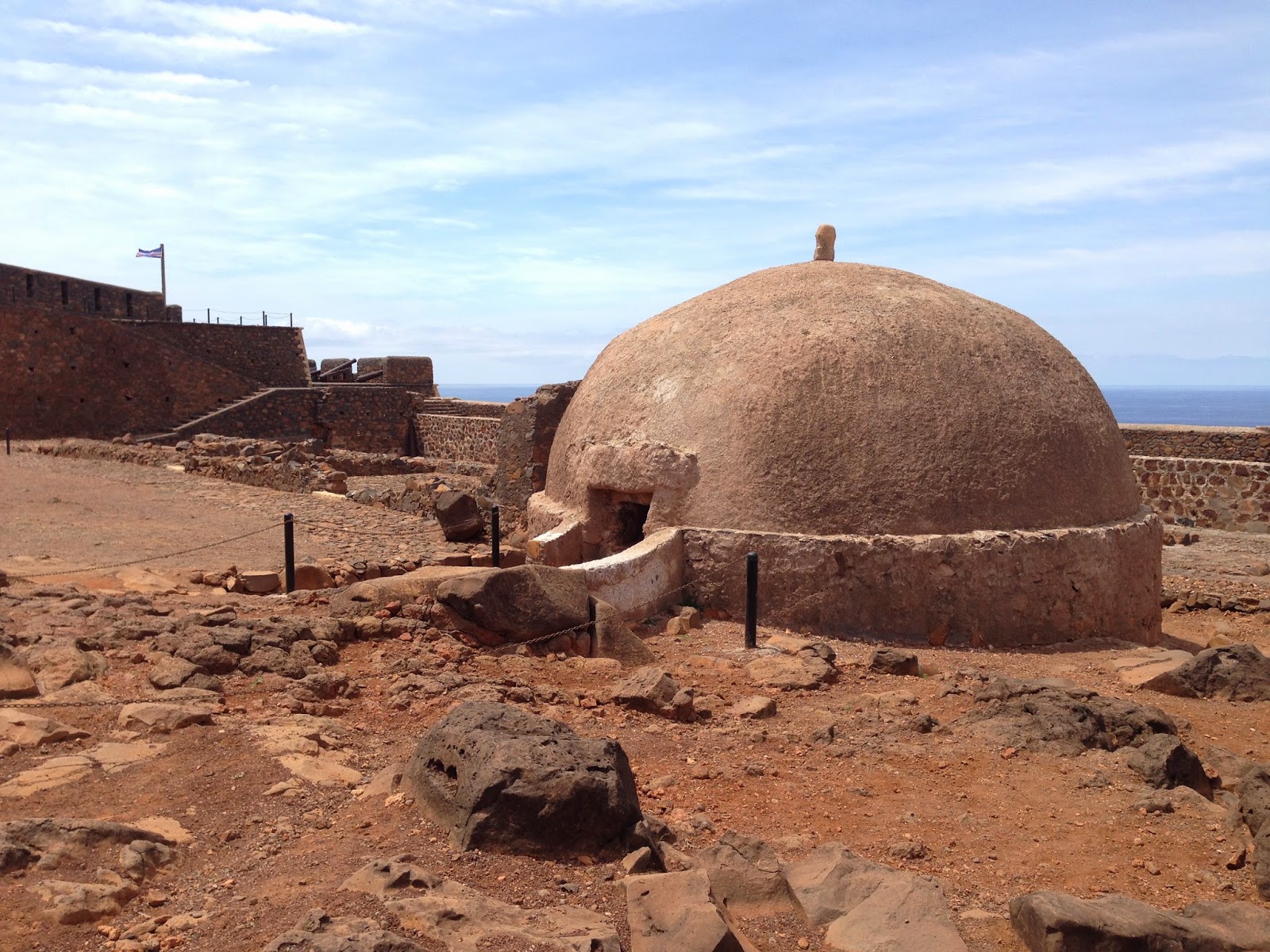We flew direct from Casablanca to Praia on Royal Air Maroc - going back two hours and flying for almost four. The plane was to continue on to Banjul after we got off and it was more than half empty. We each had three seats to ourselves to after a quick meal we all slept before landing in Cape Verde.
It's possible to get visas on arrival at Nelson Mandella Airport in Praia but I had already got mine from the Cape Verde consulate in Boston a few months ago. I was through immigration in a couple of minutes but Teresa and Glen had to wait in what could best be described as a gathering - there was very little lining up or traditional queuing. A few other flights arrived and before long there were at least 40 people in the visa line. There were problems with the printer so it didn't move much for a long time but Teresa managed to negotiate a spot near the front of the line. A number of people had lined up in front of me but once the immigration official realized they didn't have a visa they were sent to the other line - everyone went directly to the front of that line instead of going to the back so the whole thing was a bit of a mess. About 45 minutes and €25 later the two of them were through and we headed out to get local currency from the ATM and catch a taxi (1,000CVE) to our hotel, the Pestana Tropica.
A LITTLE HISTORY
Cape Verde is an archipelago of 10 volcanic islands in the central Atlantic Ocean about 350 miles off the coast of Senegal. Portuguese explorers discovered and colonized the previously uninhabited islands in the 15th century. The first capital, initially called Ribeira Grande was developed at a place now known as Cidade Velha. It was a perfect location for the developing slave trade and the islands grew prosperous before pirating, by Sir Francis Drake and others, along with the decline in slavery and lack of support from Portugal saw the nation decline rapidly. There is a lack of natural resources here and many citizens fled to Europe the Americas or other African countries. Independence came in 1973 and while this is one of the more prosperous places in West Africa it is still considered a developing nation.
SIGHTSEEING
We had a nice relaxing day in the sun beside the pool before walking along the dark sandy beach to the Plateaux area where we had dinner beside a local music festival. Most restaurants don't open until after 6pm, and we were a little early, but by the time we left it was really busy with lots of different musical acts on different stages.
The following day we rented a car from the Hertz desk at the hotel for €60 and explored the island we were on - Santiago. The Fort, called Real de San Felipe, overlooking Cidade Velha is an excellent spot because the views are amazing and the scenery stunning. It cost 500CVE each (about USD$1) to enter the grounds but we spent a good hour wandering around, taking photos and gazing out at the Atlantic.
 |
| The Real de San Felipe Fort overlooking Cidade Velha |
 |
| The Real de San Felipe Fort |
 |
| Ruins of the Ribeira Grand cathedral - built in 1693 |
Leaving Cape Verde was straightforward enough and I was prepared with printouts of all of our flight reservations. You can never have enough paperwork in Africa. We paid the same taxi fare back to the airport, went through the various checks in the terminal and waited in the small lounge for our TACV flight to Dakar. The flight was late departing but it didn't matter - I was about to hit an important milestone. Senegal will be country one hundred for me.
CAPE VERDE QUICK GUIDE
Capital: Praia
Currency: Cape Verde Escudo (USD$1 = 80CVE)
Language: Portuguese
Drives on the Right
Beer of choice: Strela (but you have to say it like Elaine Benis saying "Stella")

No comments:
Post a Comment